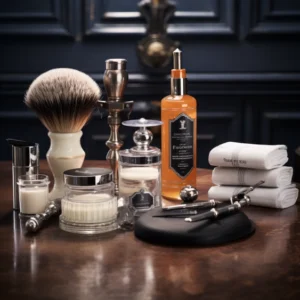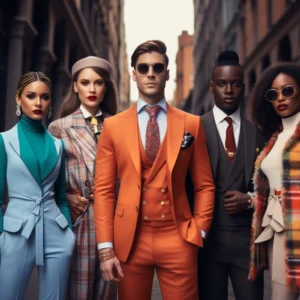In the world of fashion, shoes are more than just functional accessories; they are a language of style, expressing individuality, personality, and even social status. Choosing the right footwear is an art that goes beyond trends and comfort, delving into the nuances of personal expression. This exploration into the language of shoes delves into the factors influencing footwear choices and offers guidance on selecting the perfect pair for any occasion.
1. Understanding the Footwear Landscape
Before delving into the intricacies of choosing the right shoes, it’s essential to understand the diverse landscape of footwear. From casual sneakers to formal dress shoes, each category serves a specific purpose and communicates a distinct style.
Categories of Footwear:
- Casual Shoes: Sneakers, loafers, and boat shoes for relaxed and informal settings.
- Formal Shoes: Oxfords, derbies, and dress shoes for formal occasions and professional settings.
- Athletic Shoes: Running shoes, training shoes, and sport-specific footwear for physical activities.
2. Occasion-Driven Footwear Choices
The appropriateness of footwear is often dictated by the occasion. Understanding the unspoken rules of shoe etiquette helps in making fashion-forward choices that align with the context.
Occasion-Specific Choices:
- Formal Events: Opting for classic dress shoes in neutral tones for weddings, business meetings, or upscale gatherings.
- Casual Outings: Embracing the comfort and versatility of sneakers, loafers, or stylish sandals for everyday wear.
- Athletic Pursuits: Choosing specialized athletic shoes designed for the specific demands of running, training, or sports activities.
3. Matching Shoes with Outfits
The synergy between shoes and outfits is a pivotal aspect of fashion coordination. Harmonizing colors, styles, and formality levels contributes to a polished and put-together look.
Coordination Tips:
- Color Harmony: Matching shoe color with the dominant tones of the outfit for a cohesive appearance.
- Style Consistency: Aligning shoe styles with the overall aesthetic, whether it’s casual, formal, or sporty.
- Formality Level: Adhering to the formality of the occasion by selecting shoes that complement the dress code.
4. Considering Comfort and Fit
While style is paramount, comfort and fit should never be compromised. Ill-fitting shoes can not only be uncomfortable but also negatively impact posture and foot health.
Comfortable Choices:
- Proper Sizing: Ensuring shoes fit well in terms of length, width, and arch support.
- Material Matters: Choosing breathable materials for casual shoes and high-quality, flexible leather for dress shoes.
- Activity-Specific Considerations: Selecting athletic shoes based on the type of physical activity to provide adequate support and cushioning.
5. Investing in Timeless Classics
Fashion trends come and go, but certain shoe styles stand the test of time. Investing in timeless classics ensures a versatile and enduring footwear collection.
Timeless Shoe Styles:
- White Sneakers: A versatile and iconic choice that complements a wide range of casual outfits.
- Chelsea Boots: A stylish and versatile option that transitions seamlessly from casual to semi-formal occasions.
- Leather Loafers: Classic and refined, suitable for both casual and dressy ensembles.
6. Expressing Personal Style
Shoes are a powerful form of self-expression. They can convey personality, creativity, and even cultural influences. Embracing individuality in footwear choices adds a personal touch to any outfit.
Personal Style Statements:
- Bold Colors and Patterns: Infusing personality by opting for shoes in vibrant colors or with eye-catching patterns.
- Customization: Exploring customization options, such as monogramming or unique materials, for a one-of-a-kind look.
- Cultural Influences: Incorporating elements of cultural heritage through traditional or artisanal footwear.
7. Caring for Your Footwear
Maintaining the longevity and appearance of shoes requires proper care and attention. Regular cleaning, conditioning, and storage contribute to the extended life of footwear.
Shoe Care Tips:
- Regular Cleaning: Wiping off dirt and debris, especially in the case of suede or leather shoes.
- Storage Considerations: Storing shoes in a cool, dry place and using shoe trees to maintain their shape.
- Periodic Maintenance: Applying protective sprays, conditioners, and polishes to keep shoes in top condition.
8. Adapting to Seasonal Changes
Different seasons call for different types of footwear. Adapting to seasonal changes ensures comfort, protection, and style continuity throughout the year.
Seasonal Footwear Considerations:
- Summer: Opting for breathable materials like canvas or mesh for warm-weather comfort.
- Fall/Winter: Embracing insulated or waterproof options to navigate cold and wet conditions.
- Transitional Seasons: Choosing versatile options that can transition between varying weather conditions.
Conclusion: The Art of Shoe Selection
Choosing the right footwear is more than a functional necessity; it’s a form of self-expression and style communication. Whether making a statement with bold sneakers, exuding sophistication with classic dress shoes, or embracing cultural influences through artisanal designs, the language of shoes speaks volumes about personal identity and fashion sensibility. By considering occasion, coordination, comfort, and individual style preferences, one can navigate the diverse landscape of footwear with confidence, ensuring that every step taken is a stylish one.



